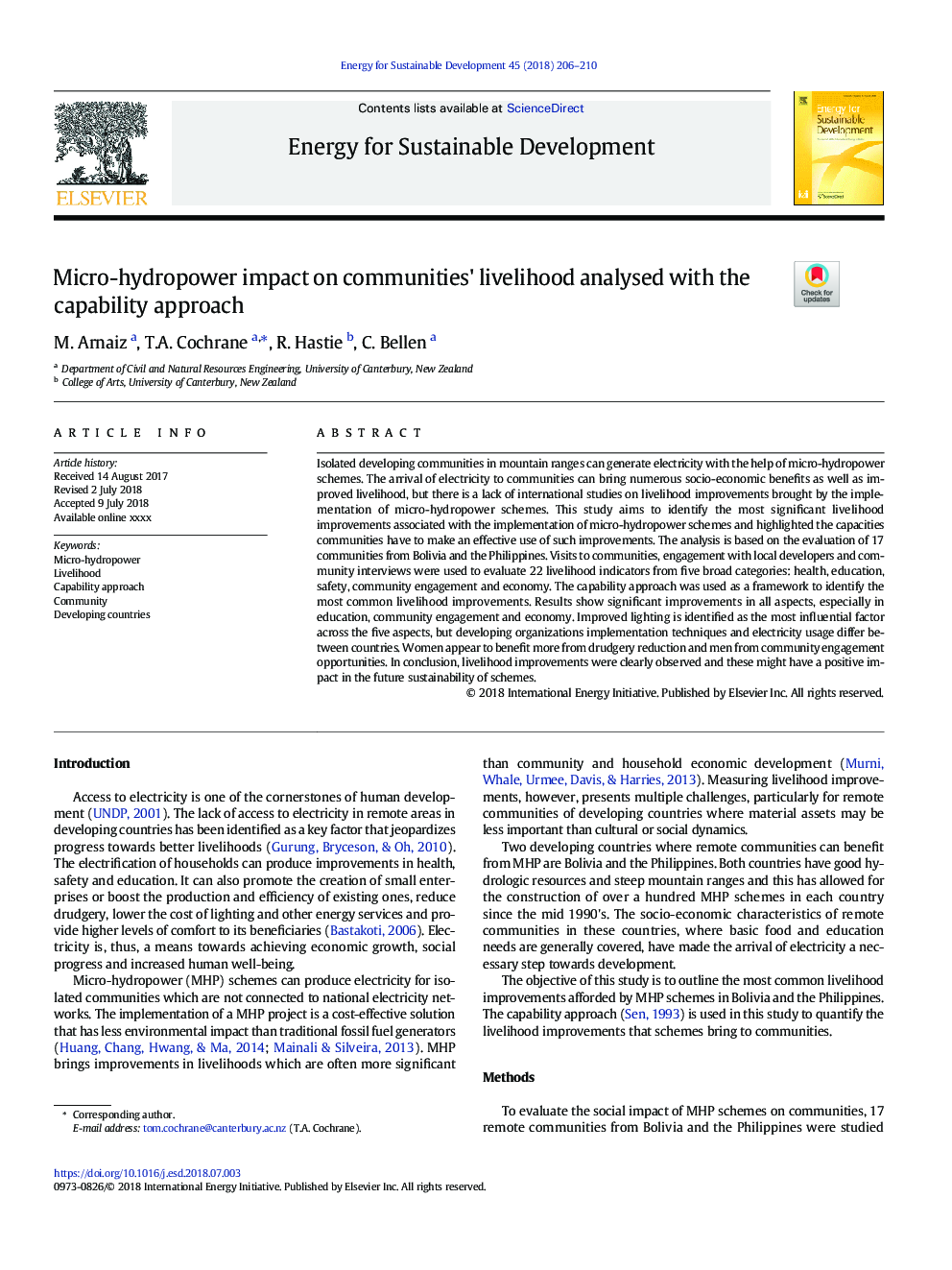| Article ID | Journal | Published Year | Pages | File Type |
|---|---|---|---|---|
| 7453533 | Energy for Sustainable Development | 2018 | 5 Pages |
Abstract
Isolated developing communities in mountain ranges can generate electricity with the help of micro-hydropower schemes. The arrival of electricity to communities can bring numerous socio-economic benefits as well as improved livelihood, but there is a lack of international studies on livelihood improvements brought by the implementation of micro-hydropower schemes. This study aims to identify the most significant livelihood improvements associated with the implementation of micro-hydropower schemes and highlighted the capacities communities have to make an effective use of such improvements. The analysis is based on the evaluation of 17 communities from Bolivia and the Philippines. Visits to communities, engagement with local developers and community interviews were used to evaluate 22 livelihood indicators from five broad categories: health, education, safety, community engagement and economy. The capability approach was used as a framework to identify the most common livelihood improvements. Results show significant improvements in all aspects, especially in education, community engagement and economy. Improved lighting is identified as the most influential factor across the five aspects, but developing organizations implementation techniques and electricity usage differ between countries. Women appear to benefit more from drudgery reduction and men from community engagement opportunities. In conclusion, livelihood improvements were clearly observed and these might have a positive impact in the future sustainability of schemes.
Related Topics
Physical Sciences and Engineering
Energy
Energy (General)
Authors
M. Arnaiz, T.A. Cochrane, R. Hastie, C. Bellen,
